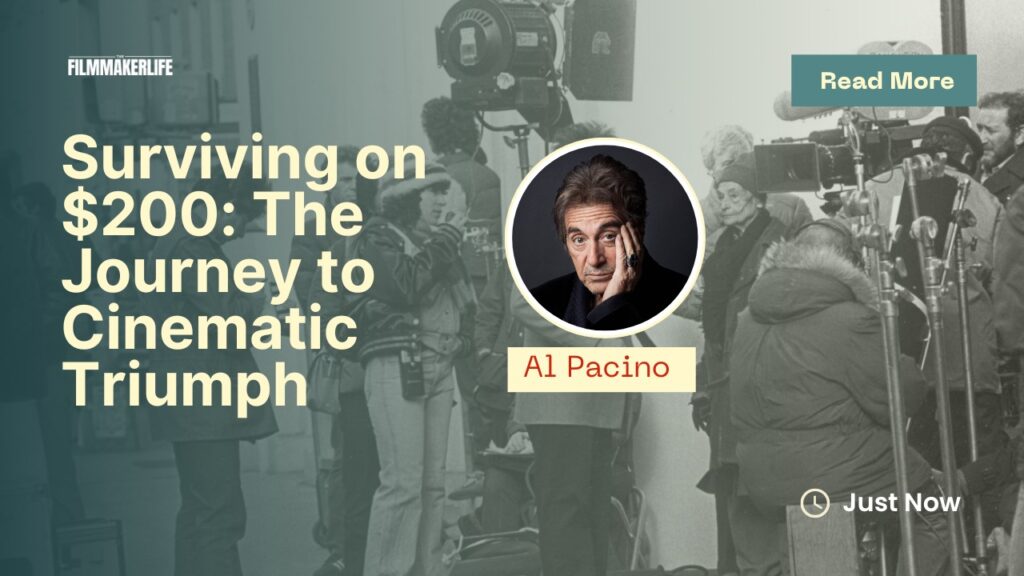The Fire Born from Hunger 🔥
Before the world called him a legend, Al Pacino was a young actor in New York City surviving on as little as $200 a month. His mother feared he would never “make it.” His friends told him to find something practical. But Pacino wasn’t chasing comfort—he was chasing truth.
That hunger, both literal and artistic, would become his weapon. It sharpened his instincts, deepened his emotion, and prepared him for a destiny few could imagine: transforming into Michael Corleone, the conflicted heir of The Godfather.
Today, his name stands beside Brando, De Niro, and Nicholson, yet his journey reminds us that cinema’s brightest lights often rise from the darkest corners of struggle.
This is the story of how Al Pacino’s early hardship became the fuel that forged a master, and how that same fire still burns through every performance he gives.
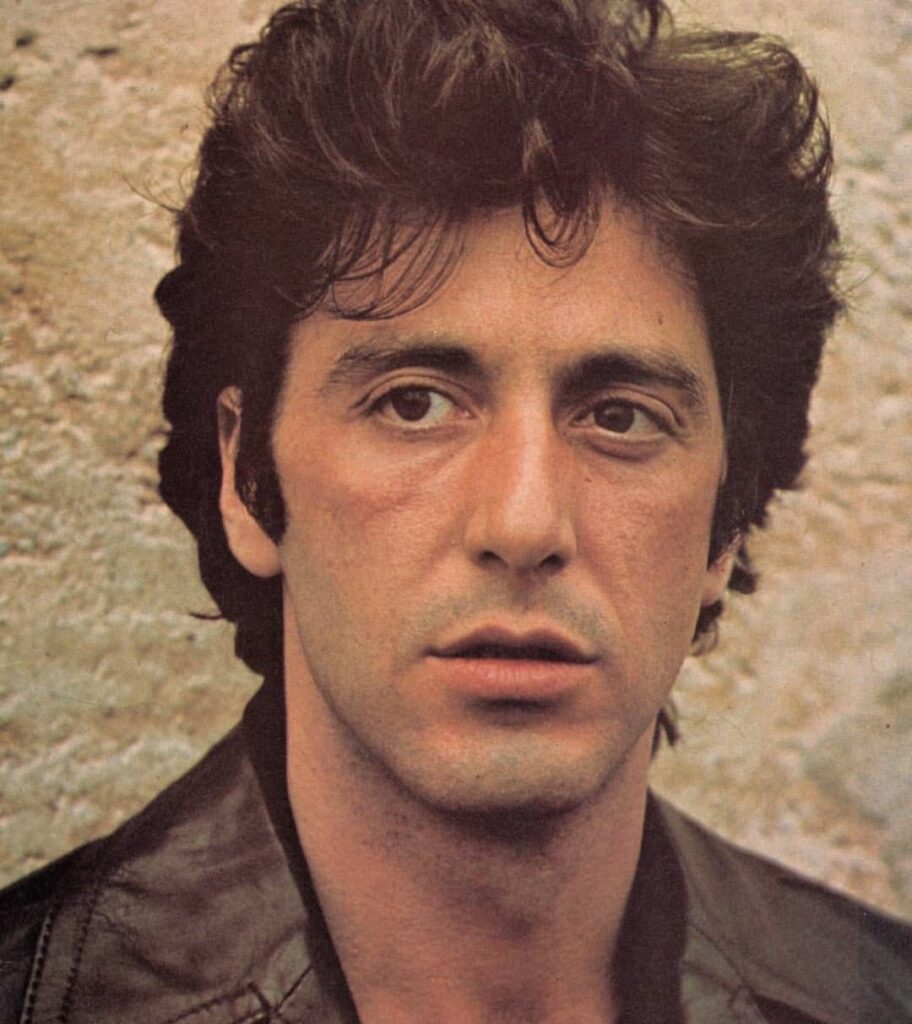
Al Pacino
The Streets That Shaped the Actor
Born in East Harlem in 1940 and raised in the Bronx, Al Pacino grew up surrounded by the noise, grit, and rhythm of working-class New York. Money was scarce, but stories were everywhere.
He later described his neighborhood as his first acting school: “The street was my stage; people were my characters.” Observing human behavior became second nature—a skill that would later define his unmatched authenticity.
But art didn’t pay the rent. His mother, a single parent, often worried that her son’s dream was unrealistic. Pacino held odd jobs, borrowed from friends, and sometimes slept wherever he could find warmth. Still, his conviction never wavered.
The Actor’s Studio and the Search for Truth
In the late 1950s, Pacino auditioned for The Actors Studio, the famed training ground for method acting founded by Lee Strasberg. He was rejected several times before finally being accepted. That perseverance defined him: he didn’t crave fame—he craved mastery.
Once inside, Pacino became obsessed with understanding emotion. Strasberg’s method demanded actors live truthfully under imaginary circumstances. For Pacino, that meant living his characters until the line between self and role blurred.
This devotion would later give birth to performances that felt more like lived experiences than acting—something raw, vulnerable, and magnetic.
The Struggle Before the Spotlight
During his twenties, Pacino’s path was anything but glamorous. He worked sporadically in off-Broadway plays, often earning barely enough to eat. His monthly expenses were minimal, yet even $200 felt like survival money.
Friends recall his tiny apartment filled with scripts, cigarettes, and hope. He’d rehearse for hours alone, practicing facial expressions in the mirror. Despite exhaustion and rejection, he believed each failed audition was another lesson.
He later reflected, “When you’re poor and hungry, you find a different kind of drive. Hunger sharpens the fire.” That relentless discipline turned deprivation into the training ground for greatness.
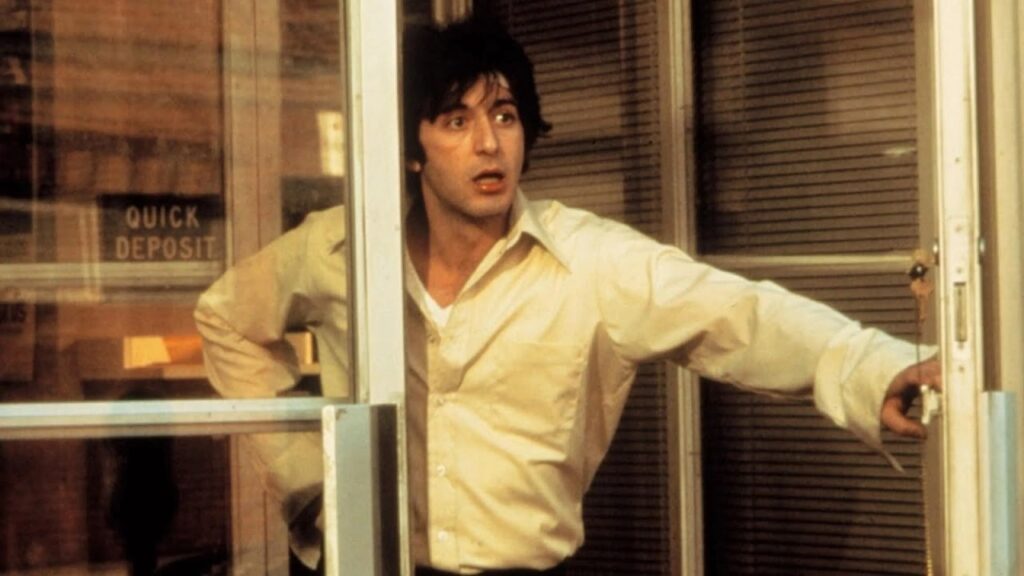
Breakthrough on Stage: The Birth of a Presence
Pacino’s first major break came with “The Indian Wants the Bronx” (1968), a play by Israel Horovitz. His portrayal of a troubled young man in a violent world earned him an Obie Award and the attention of critics who saw in him a raw, electric force.
Soon after, he starred in “Does a Tiger Wear a Necktie?” on Broadway—another intense performance that earned him a Tony Award. Suddenly, casting agents began whispering his name.
But Hollywood still doubted him. He wasn’t conventionally handsome, and studios preferred safer, known faces. It would take one visionary director to see beyond appearances.
Francis Ford Coppola and the Casting That Changed Film Forever
When Francis Ford Coppola began casting The Godfather (1972), he faced enormous pressure from Paramount to pick a bankable star. He wanted Pacino—an unknown theater actor with fire in his eyes. The studio refused.
Coppola fought relentlessly. He saw in Pacino a quiet intensity perfect for Michael Corleone, the reluctant son who becomes a ruthless leader. After several screen tests and heated debates, Pacino finally landed the role that would alter film history.
From his first scenes, critics noticed something different. His performance was understated yet terrifying, internal but explosive. That slow transformation from innocence to corruption became one of cinema’s defining arcs.
The hunger that once defined his survival now defined his art.
Method and Madness: Inside Pacino’s Craft
Pacino’s process was immersive to the point of obsession. He delved deep into Michael Corleone’s psychology, studying body language, tone, and silence. His performance wasn’t about delivering lines—it was about breathing life into the unsaid.
This dedication continued in later roles:
- Serpico (1973) – he embodied an honest cop fighting corruption.
- Dog Day Afternoon (1975) – he lived the chaos of a man cornered by desperation.
- Scarface (1983) – he turned Tony Montana into a cultural symbol of ambition and excess.
Each role carried traces of that same hunger from his early days—the need to prove, to feel, to dig deeper.
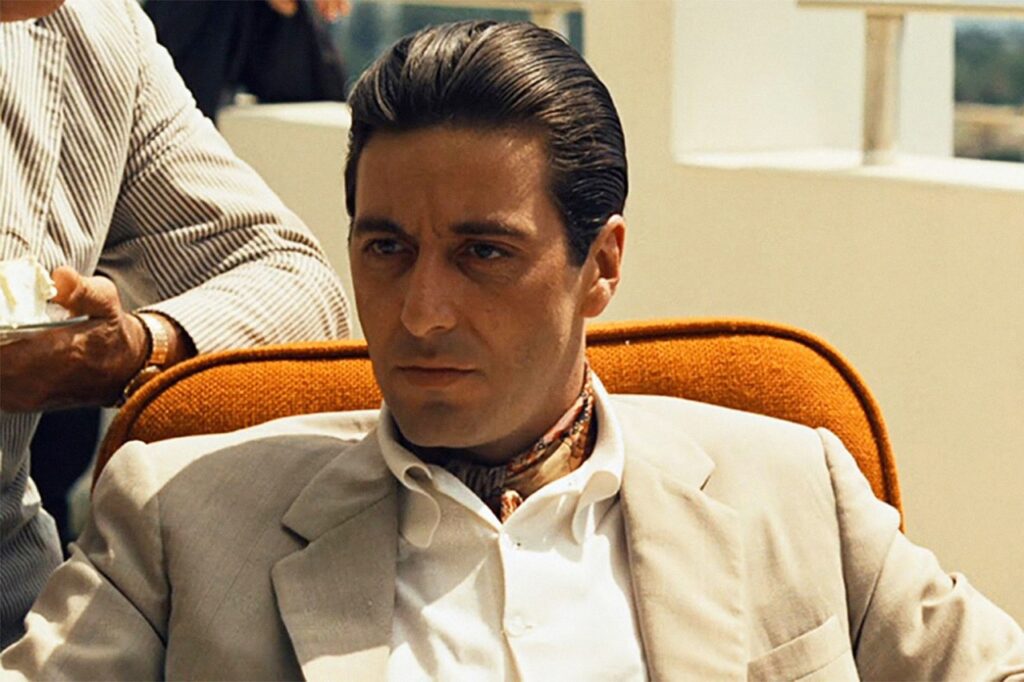
The Evolution of a Legend
While many actors fade after early fame, Pacino evolved. He balanced theatrical precision with cinematic realism, exploring everything from Shakespeare to modern crime dramas.
His later performances in Scent of a Woman (1992), Heat (1995), and The Irishman (2019) showed an artist still hungry—not for money or awards, but for truth.
Even after decades, he continues to experiment, direct, and mentor younger actors, embodying a career defined by artistic curiosity rather than complacency.
Legacy: What Al Pacino Taught Cinema
Pacino didn’t just act—he redefined what screen performance could be. His influence reshaped modern acting in three ways:
- Silence as power: Few actors have used stillness as effectively. In The Godfather, his quiet gaze spoke louder than violence.
- Authenticity over glamour: He made imperfection magnetic. Viewers connected not to perfection, but to vulnerability.
- Commitment as identity: Whether playing a cop, a criminal, or a lover, Pacino’s total immersion reminded audiences that art demands sacrifice.
Coppola once said, “Al Pacino didn’t just play Michael Corleone—he became him.” That ability to vanish into a role became the gold standard for generations of actors that followed.
From Hunger to Immortality
It’s easy to see the Oscars, fame, and applause and forget where it began: a young man walking the Bronx with empty pockets and a head full of dreams. But those $200 months weren’t wasted—they were the crucible that forged him.
Every late-night rehearsal, every rejection, every moment of doubt became part of the performance that would define modern cinema.
In the end, Al Pacino’s story isn’t just about survival—it’s about transformation through passion. His hunger became art. His struggle became legacy.
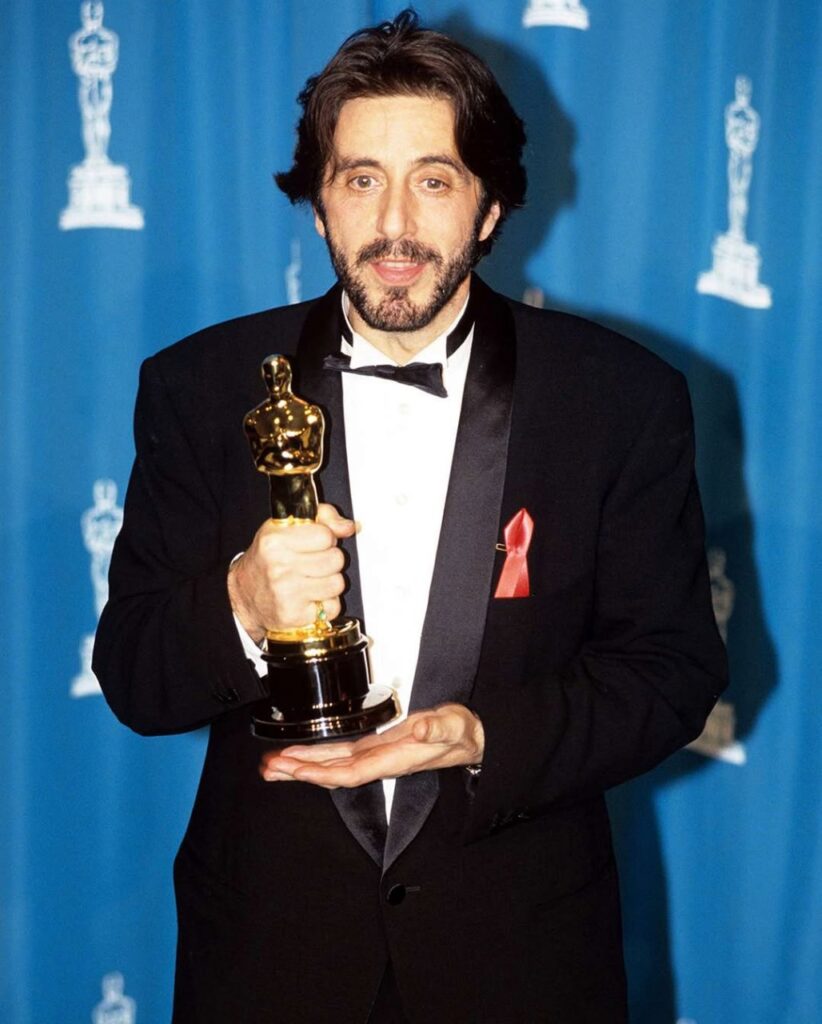

Creative strategist dedicated to uncovering the stories behind today’s most visionary independent creators. With a background in film marketing and festival programming, Marco writes about cinema, distribution, and the evolving landscape of modern cinema. His work focuses on empowering filmmakers to turn creativity into sustainable careers.

